Yixing Purple Clay Teapot Imperial Phoenix Tail-Zisha teapot
The Art of Chinese Tea Culture
The Yixing Purple Clay Teapot Imperial Phoenix Tail is an integral part of Chinese tea culture, which has a rich history dating back thousands of years. These teapots are not just brewing tools; they are cultural symbols that reflect the harmonious relationship between humans and nature. Made from the famous purple clay (Zisha), which is found only in the Yixing region of Jiangsu Province, China, these teapots exemplify the harmonious blend of functionality and artistic expression.
Application Scenario Expansion
Which industries are applicable to?
Tea Industry: Fundamentally, the Yixing Purple Clay Teapot Imperial Phoenix Tail is for the tea industry. Various professional tea houses, tea retailers and tea masters use this kind of tea wares because of their excellent brewing results especially for oolong, black and pu-erh teas.
Hospitality and Luxury Accommodations: Upscale hotels, resorts, and luxury accommodations incorporate these teapots into their tea service offerings, providing guests with an authentic cultural experience.
Cultural education and museums: Cultural institutions often display Yixing teapots in their exhibits, and some use Yixing teapots in practice to demonstrate the traditional aesthetic tastes of Chinese culture in their cultural education programs and tea ceremonies
Interior Design and Decor: Collectors and interior designers appreciate these teapots as decorative pieces that introduce Eastern aesthetic and philosophical elements into homes, offices, and commercial spaces.
Wellness and Mindfulness Practices: Meditation centers, wellness retreats, and mindfulness practitioners incorporate the tea ceremony with Yixing teapots as a form of moving meditation and stress relief.

What Common Problems Can Be Solved?
Inconsistent Tea Brewing: Due to the unique characteristics of Yixing clay, which is able to regulate temperature in an even manner, glass, porcelain, or metal teapots simply cannot perform as consistently.
Flavour contamination: Yixing clay, unlike other materials, will not impart its own flavour into the tea, the clay will absorb a small amount of the tea with every usage.
Tea Cools too Quick: The insulating quality of zi sha helps regulate optimal brew temperature longer than other mediums, and allows multiple infusions while the tea does not lose too much heat.
Modern Disconnection from Tradition: In the modern fast digital world, brewing tea in an Imperial Phoenix Tail teapot induces a feeling of connection to ancient traditions and mindfulness.
Environmental Friendliness: As a naturally-occurring clay born from traditional workmanship, these teapots make an eco-friendly choice over mass-produced plastic or metal brewing vessels.
FAQ
Yixing purple clay (Zisha) is formed by a distinct mineral composition that contains high concentrations of iron oxide and quartz. The composition of the clay forms tiny pores in the teapot that allow the teapot to “breathe” but also keep heat extremely well. Over time, it interacts with tea, retaining the smallest amounts of tea oils and essence. The clay will interact more and more with tea being brewed in it, causing a well-used teapot to eventually enhance the flavor of tea brewed within it. The clay walls of Imperial Phoenix Tail model is thick enough to retain heat yet allow the natural air exchange through the tiny micro-pores in the clay.
The proper method of seasoning: First thoroughly rinse your new teapot in hot water (never use any soaps or detergents), then fill the teapot with the type of tea that you will use it for at a slightly higher then normal tea concentration. Leave it for several hours, or overnight, before discarding the tea, rinsing the teapot with clean water.
Routine care:
Dedicate your teapot to one type of tea only (oolong, pu-erh, black, etc.)
After each use, rinse in hot water only and allow to dry fully
Never use any soaps, detergents or abrasive cleaners
Store with the lid at a slight angle to allow air flow
Handle with clean hands and preferably by the body of the teapot rather than handle or spout
Wipe the exterior with a soft cloth dipped in warm tea occasionally to keep its exterior lustre.
The term Imperial Phoenix Tail refers to the distinctive form of this teapot style. The teapots have an elegant curved spout, which resembles the tail, or a feather, of a phoenix – the mythical bird associated with rebirth and transformation, and a key symbol for the Chinese imperial household. Such designs were once seen only on imperial objects, suggesting that the current style of teapot has an imperial pedigree.
The design is not only visual but also functional: the angle and length of the spout is precisely measured to bring the most controllable pour, so no drips are left and a smooth and uninterrupted stream flows comfortably. The handle is also perfectly weighted against the angled spout, bringing ergonomic congruence when pouring tea. This highly detailed design has been elaborated for centuries and the Imperial Phoenix Tail is one of the most advanced form of Yixing teapot design.
Comparison Table: Yixing Teapot Styles
| Feature |
Imperial Phoenix Tail |
Round Belly (Xi Shi) |
Flat (Shi Piao) |
Square (Fang Gu) |
| Clay Type |
Zini (Purple Clay) |
Zhuni (Red Clay) |
Duanni (Yellow Clay) |
Zini (Purple Clay) |
| Best For Tea Type |
Oolong, Aged Pu-erh |
Light Oolongs, Black Tea |
Green Tea, White Tea |
Dark Pu-erh, Black Tea |
| Heat Retention |
Excellent (9/10) |
Very Good (8/10) |
Good (7/10) |
Excellent (9/10) |
| Pour Speed |
Moderate |
Fast |
Slow |
Moderate |
| Aesthetic Style |
Classical Elegant |
Traditional Balanced |
Modern Minimal |
Architectural |
| Capacity Range |
150-300ml |
100-250ml |
120-220ml |
180-350ml |
| Seasoning Effect |
Pronounced |
Moderate |
Subtle |
Pronounced |
| Price Range |
$$$-$$$$ |
$$-$$$ |
$$-$$$ |
$$$-$$$$ |
| Cultural Significance |
Imperial Heritage |
Literary Tradition |
Scholar’s Choice |
Philosophical Symbol |
Data Source: Protected Geographical Indication (PGI) for Yixing Pottery, EU Agricultural Quality Product Registry. https://ec.europa.eu/info/food-farming-fisheries/food-safety-and-quality/certification/quality-labels/geographical-indications-register/
The typical capacity for an Imperial Phoenix Tail teapot varies from around 150ml to 300ml (5-10 oz). The size is relatively small. This feature is not incidental. Traditional Chinese tea brewing intentionally uses smaller teapots to brew smaller amounts of more dense brew repeatedly, rather than a large volume all at once.
Ideal brewing steps:
1.Warm the teapot up by rinsing it with hot water.
2.Put in a suitable amount of tea leaves (around 1g for every 15ml of water).
3.Pour in water at the correct temperature (for the correct variety of tea. Usually around 85-95°C/185-205°F).
4.Steep for an appropriate amount of time (depending on variety).
5.Pour thoroughly into a separate serving pitcher or directly into cups
6.Enjoy delicious tea brewed with Imperial Phoenix
7.Repeat for multiple steeps while increasing steeping time for each brew.
The unique design of the Imperial Phoenix Tail is ideal for brewing oolong and darker teas. Heat retention capabilities and the short stout form allows these teas to infuse heat quickly and efficiently, while also needing multiple steeps, and in the process allowing the tea leaves to unfurl slowly with multiple steeps.
Here are a few pointers to determine authenticity in high-grade specimens (such as the Imperial Phoenix Tail) of true Yixing purple clay teapots.
True Yixing purple clay teapots–even the best ones–should:
Not be perfectly smooth, but instead be a bit rough (pebbly sand texture) in feel
Ring with a metallic, bell-like quality when its lid is tapped with a finger
Smell of earth when plain water rinses through it, especially of wet earth when hot water rinses through it (most noticeable with natural or lightly-fired purple clay)
Have the chop (signature seal) of the artist imprinted into the inner surface of the teapot
Have a lid that fits so well is that it can be picked up by the lid, and when stopped, will not make a sound, possibly implying suction occuring between tea lid and teapot
Appear rustic and handmade rather than smooth and manufactured
Be accompanied by indirect or direct documentation of its origins and that simply having its documentation of its creator is the best way to ensure that one has not purchased a fake teapot
Made from regular (non-purple) clay with purple dye or chemical additives. True Yixing purple clay occurs only in specific regions of Yixing
The Imperial Phoenix Tail teapot excels with:
Oolong teas: Particularly Tie Guan Yin, Dong Ding, and Phoenix Mountain oolongs benefit from the temperature regulation and clay interaction
Pu-erh teas: Both raw (sheng) and ripe (shou) pu-erh develop deeper complexity when brewed in purple clay
Black teas: Traditional Chinese black teas like Keemun and Dian Hong release their full bouquet of flavors
Aged white teas: Compressed white tea cakes that develop depth with age pair beautifully with seasoned purple clay teapots





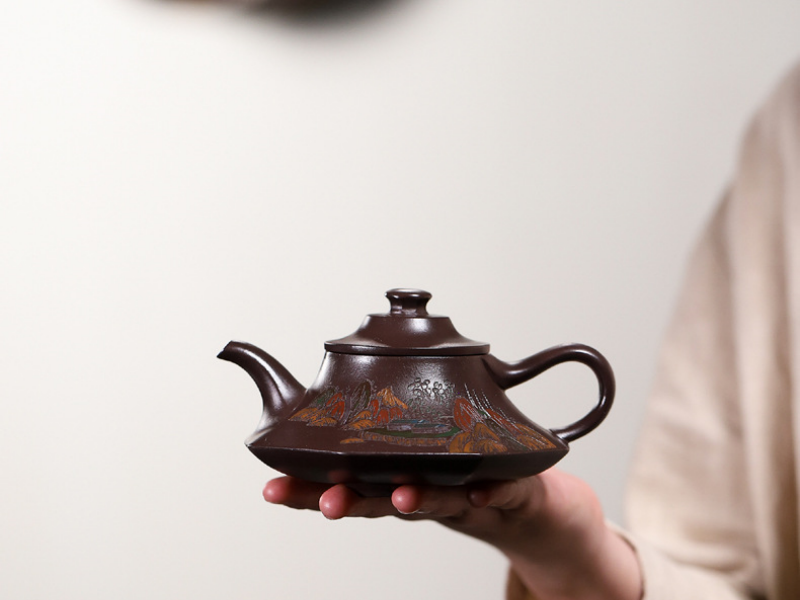
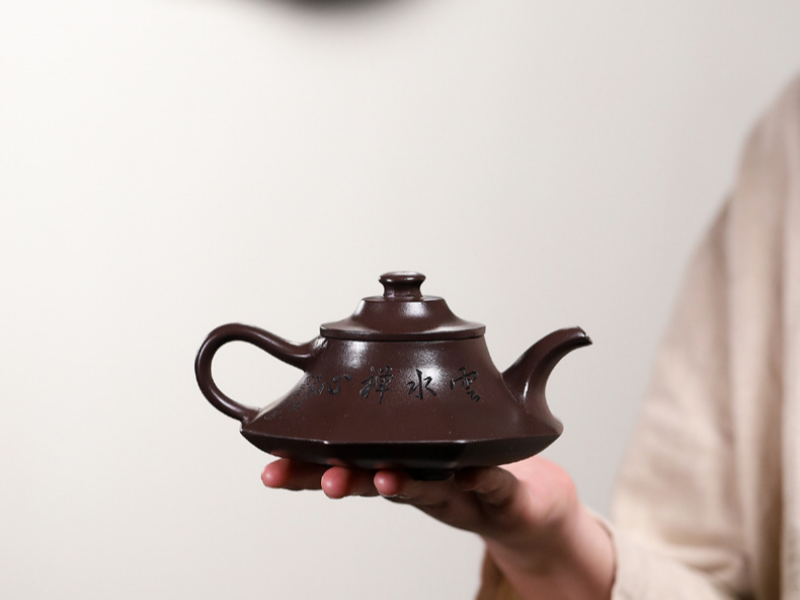

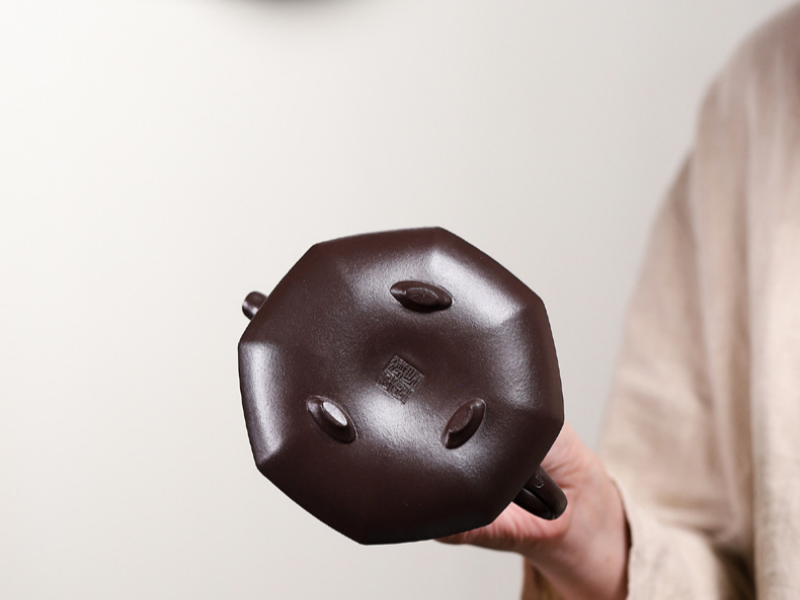
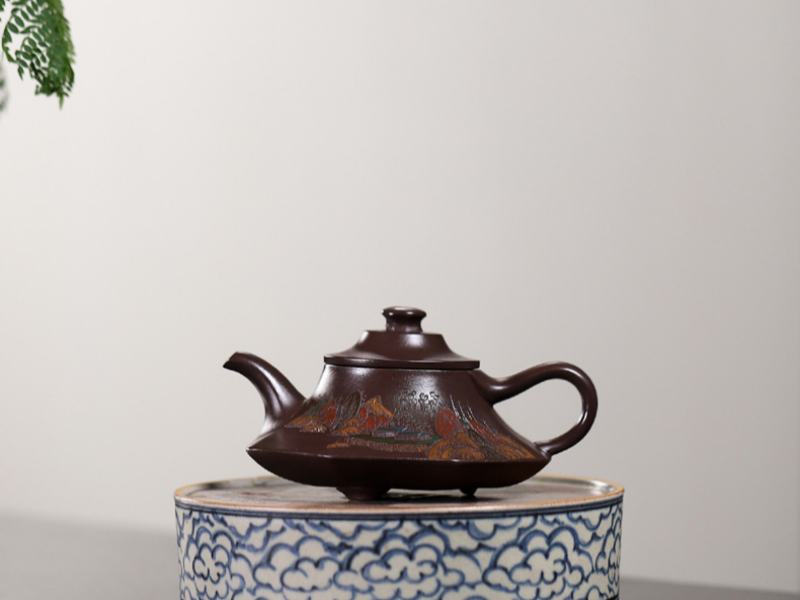
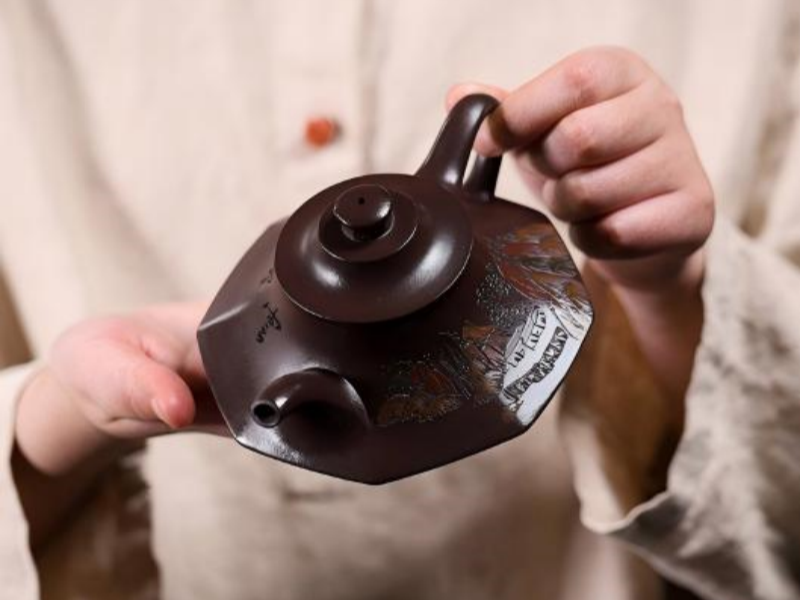






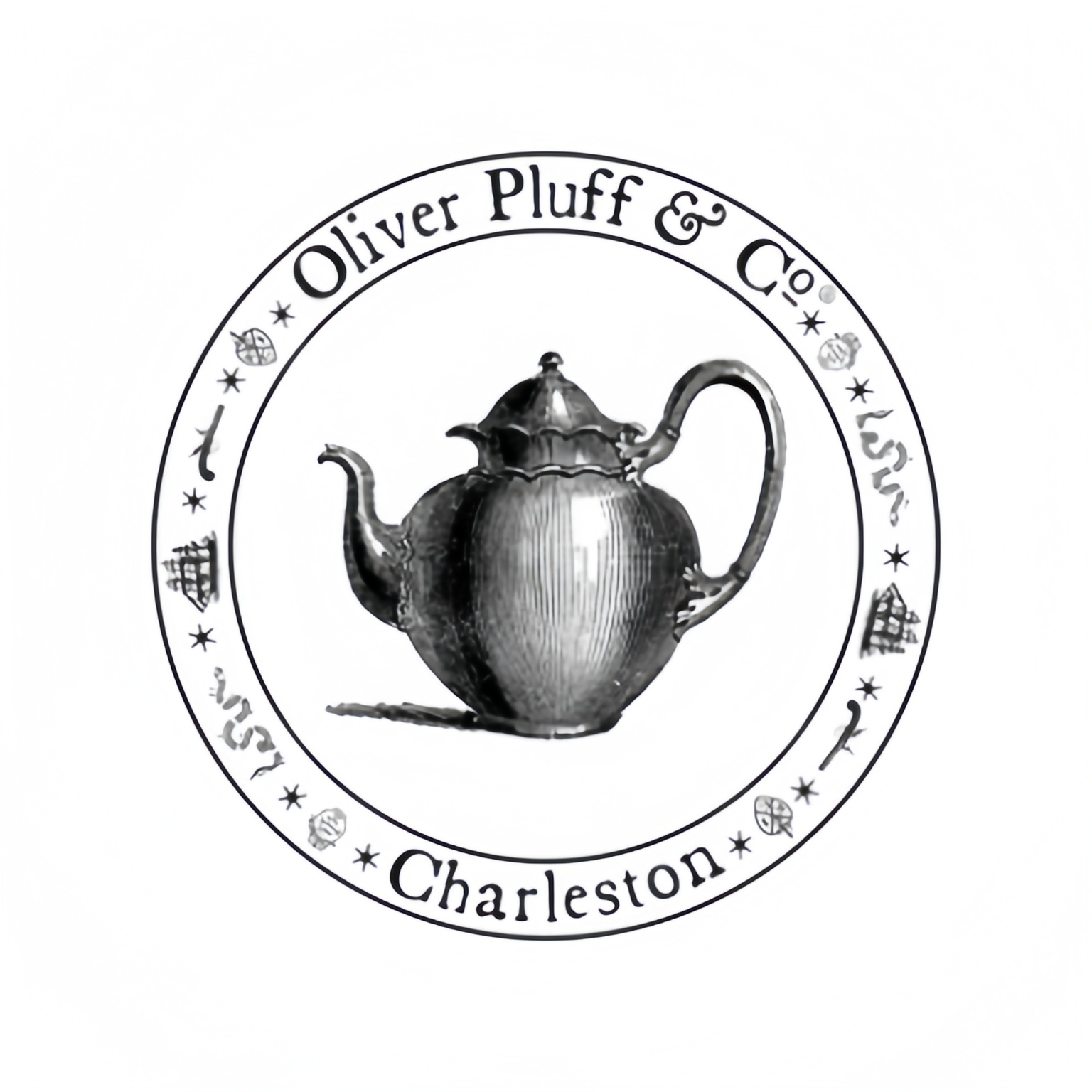





Tendai Mbeki –
Takes my jasmine tea to the next level. The Phoenix Tail adds such artistic flair to my kitchen.
Adanna Nkrumah –
Exceeded my expectations! Purple clay really does make a difference in taste.
Rashid Al-Mutawa –
Beautiful addition to my tea collection. Love how compact yet elegant it looks on my counter.
Ghada Asfour –
A great price for authentic, handmade ceramic ware. The taste of my green tea is on another level now.
Faisal Nasser –
A Phoenix Tail handle is comfortable to hold; A beautiful looking teapot. Highly recommended.
Nadia Barakat –
Excellent quality control – arrived perfect with beautiful packaging.
Yousef Haddad –
The teapot is well-crafted, and the Imperial Phoenix Tail pattern is outstanding. This item is a work of art for tea drinkers.